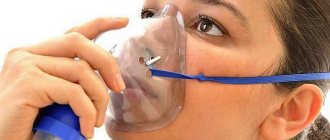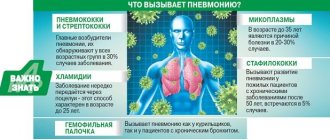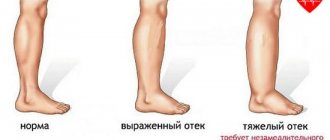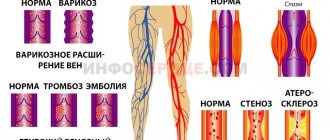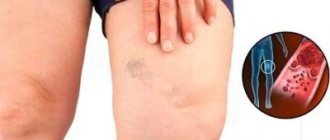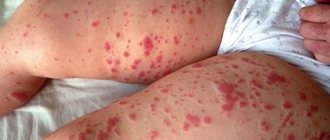The symptoms of diseases such as cardiac and bronchial asthma are critically similar and it is difficult for even an experienced doctor to make a diagnosis. However, distinguishing the attack of these ailments is the most important task, because these different diseases require the use of different drugs. This is especially true for emergency care.
To eliminate asthma attacks, it is strictly prohibited to use narcotic analgesics. Equivalent to this is the use of adrenergic medications during an attack of cardiac asthma (hereinafter referred to as CA). These drugs stop an attack of bronchial asthma, but bring absolutely no results during a heart attack. The faster the doctor determines the difference between these ailments and makes the correct diagnosis, the more successful the treatment will be.
Definition
Cardiac asthma is a disease accompanied by attacks of breathlessness and is a serious human condition. It is acute failure of the left side of the human heart that causes such attacks. Disturbed breathing rhythm is most often sudden, but can also occur gradually.
The human heart consists of 4 chambers: the atria (right and left) and the ventricles (right and left). The pulmonary veins supply blood to the left atrium. It is the stagnation of blood in the pulmonary circulation (the right ventricle and the left atrium are its components) that causes breathing and blood circulation disorders that are characteristic of asthma. The pressure in the left atrium increases, and the outflow of blood to the left ventricle becomes more difficult. Because blood accumulates in the capillaries of the lungs, cardiac asthma can cause pulmonary edema, which is extremely life-threatening. In case of heart failure of this type, emergency medical assistance is urgently required.
Help before doctors arrive
If there are signs of an attack, before the doctors arrive, the patient needs first aid. The algorithm of actions includes the following steps:
- position the person in the most comfortable position for him, lowering his legs to the floor from the bed to reduce blood flow to the lungs;
- the patient should take a hot bath for the legs, which helps to increase blood flow to them and reduce its amount in the pulmonary arteries;
- applying a tourniquet over clothing on the legs (below the groin area) for 20-30 minutes, as a result of which the blood will be retained in the lower part, its circulation in the lungs will decrease.
What does the disease “look like”?
As a consequence of left ventricular failure, cardiac asthma plagues people with this pathology. Its symptoms can appear both during the day and at night, but attacks of suffocation still occur more often at night , especially if a person has overdone something during the day. Shortness of breath can be caused by two types of stress:
- Emotional,
- Physical.
The intensity of physical activity required to provoke an attack of cardiac asthma is different and depends on the degree of heart failure of a particular patient. So, for some, an attack occurs when climbing several floors of stairs, while others begin to experience a lack of air and breathing difficulties from a simple sharp tilt.
Eating or drinking heavily, in other words, overeating, which results in a full stomach, can also cause a cardiac asthmatic attack, which is preceded by a feeling of discomfort and constriction in the chest, and a change in heart rhythm.
The reason for an attack can also be a stressful state, nervous tension, or a person’s excitement due to any events or situations.
When a person with cardiac asthma assumes a horizontal position, a redistribution of blood occurs in the vessels, causing it to stagnate in the lungs. In this case, the patient suddenly experiences a feeling of chest compression (“a feeling of squeezing the ribs with a hoop”), shortness of breath, and difficulty breathing. It becomes a little easier when a person sits up on the bed, dangles his legs, or even stands up.
An attack of cardiac asthma is characterized by the presence of the following manifestations:
- Long and heavy (noisy) inhalation;
- Dry and deep paroxysmal cough, which is later accompanied by sputum production. A cough usually appears if the attack lasts longer than 10-15 minutes;
- Rapid breathing. If the normal number of respiratory movements is about 20 per minute, then during an attack of cardiac asthma it increases to 50-60;
- Excitement, anxiety, panic, fear of death. Such phenomena sometimes lead to inappropriate behavior of a person, and this, in turn, can complicate the provision of first aid to him.
Symptoms of asthma, such as a feeling of suffocation and shortness of breath, may be exacerbated by the presence of a cough. It becomes difficult for the patient to speak at such a moment.
A severe and prolonged form of an asthma attack is accompanied by profuse cold sweat, loss of strength, swelling of the neck veins during an attack, the appearance of a cyanotic skin tone and bluish discoloration of the nasolabial triangle, and the release of pink sputum with foam during coughing. Subsequently, bubbling wheezing is added, which can be heard from a distance. Such attacks indicate the appearance of such a formidable complication as pulmonary edema. And this condition threatens human life. That is why cardiac asthma requires immediate and comprehensive treatment.
Information about the disease
This pathology is not a separate disease, but one of the manifestations of heart failure. Asthma is a catalyst that complicates existing problems with the cardiovascular system. Alveolar pulmonary edema often occurs against the background of pathology.
The process takes place in several stages:
- Before the onset of an attack, shortness of breath, shortness of breath, and mild coughing appear within 2-3 days. In general, a person’s sensations are normal, but with physical activity (climbing stairs, fast walking), his condition worsens;
- An attack itself, characterized by a lack of air, an accelerated heartbeat, and a feeling of panic. Such manifestations are aggravated in a horizontal position, and the patient is forced to sit or recline to facilitate inhalation.
- Filling of the lungs with fluid, leading to swelling and difficulty breathing - as a complication of asthma. Without timely assistance, this condition leads to death.
When an asthma attack occurs, the functioning of the respiratory system remains virtually unchanged; there is an imbalance in cardiac activity.
Causes of cardiac asthma
It occurs in the same diseases as pulmonary edema:
- Various heart defects, among which it is necessary to highlight mitral valve stenosis, when the opening between the left atrium and the ventricle narrows, which makes it difficult for blood to flow. The disease appears more often in older people who have suffered from rheumatism for many years;
- Myocardial infarction (often acute);
- Cardiosclerosis;
- Heart rhythm disturbances;
- Hypertension, especially in the presence of hypertensive crises;
- Chronic angina;
- Heart aneurysm.
The risk of cardiac asthma is increased by poor diet, alcohol consumption, smoking, and violation of work and rest schedules.
Bronchial and cardiac asthma: differences
Many, due to lack of knowledge, may equate bronchial asthma with cardiac asthma. Errors most often arise due to the similarity of some symptoms. In both cases, the person experiences shortness of breath and suffocating attacks. But the difference between bronchial asthma and cardiac asthma is that if in the first case the cause of shortness of breath is spasm of the bronchi and swelling of their mucous membranes, then in the second case shortness of breath is a consequence of the ineffective functioning of the pumping function of the heart. Bronchial asthma is characterized by preliminary contact with irritating substances, lung diseases, and various allergic diseases.
Bronchial asthma is always an independent disease, and cardiac asthma is one of the signs of heart failure.
Despite the similarity of names, the causes of bronchial and cardiac asthma are radically different
Differential diagnosis of bronchial and cardiac asthma is very important for proper treatment. Carefully collected complaints, studying the history of the disease, and electrocardiogram data play an important role in establishing the correct diagnosis.
Establishing diagnosis
At the first examination, not every doctor is able to diagnose cardiac asthma, because its symptoms are much the same as those of bronchial asthma. Initially, the patient is examined, the skin tone and phalanges of the fingers are studied, blood pressure is measured, the chest is tapped and audible.
In addition, a direction is issued to complete:
- electrocardiograms (ECG);
- Ultrasound of the heart (echocardiography);
- Doppler of the heart - ultrasound duplex scanning;
- X-ray in three projections, which determines fluid stagnation in the lungs.
In order to eliminate errors, differential diagnosis is carried out, comparing cardiac and bronchial asthma.
They clarify the time of the onset of the first signs (most often they occur at retirement age), make sure that there are no allergic reactions and diseases of the respiratory system, and determine the presence of heart problems.
How to help a patient with an attack of cardiac asthma?
The very first thing is to immediately call the ambulance station and correctly describe the symptoms of the disease to the dispatcher. Before the medical team arrives, try to provide emergency assistance to the person, because in such a situation only the people around him can help the patient. All actions must be performed quickly and consistently. Their goal is to facilitate the work of the heart muscle and prevent blood stagnation . To do this, the following activities are carried out:
- A suffocating person is placed half-sitting on the bed. This position of the patient with his legs down reduces the load on the heart.
- Provide access to fresh air (open the window, if possible, move the patient closer to the window opening).
- All constricting items of clothing (belt, tie, bra) that interfere with normal blood circulation must be loosened or eliminated.
- If you have a tonometer at hand, then if an attack of cardiac asthma occurs, it is necessary to measure the patient’s pressure. If blood pressure is normal or elevated, then the patient is given sublingual nitroglycerin with validol
(the latter neutralizes the side effects of nitroglycerin).
The patient must dissolve the tablets completely. If there are sprays containing nitroglycerin, their use will be more effective. However, if a person suffers from low blood pressure, then such medications are prohibited. In this case, you can only use validol. You can repeat taking medications after 5 or 10 minutes (under blood pressure control!), but no more than 2–3 times, so as not to harm the patient’s health. It must be remembered that such repetitions are possible in chronic patients for whom the use of nitroglycerin is common. It should be given with caution to people who have not previously taken this drug. - Place the patient's feet in a basin of warm water. It is advisable to do this 10 minutes after the person is given a sitting position and air access is provided.
- Due to the fact that an attack of cardiac asthma can lead to pulmonary edema, inhalation of ethyl alcohol vapor
. To do this, a piece of gauze is moistened in it and placed on the patient's face. If there is no alcohol on the farm, then as a last resort you can use vodka, but you should keep in mind that the ethanol concentration in this alcoholic drink is still lower than required.
Attention should be paid to suppressing the patient’s emotional stress (sedatives and psychotherapy are used for this purpose).
First aid provided correctly and on time, aimed at supporting the functioning of the heart and lungs, can even be the key to ensuring life. First aid to a patient should not cause harm to his health.
If the clinic is located far from the patient’s place of residence or stay, then first aid measures must be continued during his transportation, but this is already part of the functions of the ambulance team, which the accompanying person should not interfere with advice.
First aid
At the first attacks of suffocation, it is necessary to call a team of specialists, and in the meantime, the patient should be provided with all measures to eliminate the symptoms.
Emergency care for cardiac asthma consists of the following:
- it is necessary to help the person take a sitting position, thus improving heart function;
- free a person from suffocating items of clothing that can impede the flow of oxygen;
- provide the asthmatic with a stream of fresh air;
- in order to save the amount of blood in the limbs, they should be tied with tourniquets, while leaving one limb free. Every 15 minutes it is necessary to transfer tourniquets from one limb to another.
To always be aware of events, you must have all the required attributes at home. In this way, you will be able to protect yourself from bad consequences.
How to treat cardiac asthma?
It is possible to cure cardiac asthma only in a hospital setting with strict adherence to the recommendations of doctors. The presence of attacks of shortness of breath, turning into suffocation, requires immediate hospitalization.
Even if, during an exacerbation of SA, it was possible to alleviate or eliminate the attack before the ambulance arrived, the patient must be immediately hospitalized in a hospital without fail. It is in the hospital that the cause of the asthma attack is determined and adequate treatment is prescribed.
Cardiac asthma is diagnosed based on the following data:
- Information obtained during the interview and examination of the patient;
- Clinical symptom assessments;
- Electrocardiograms;
- X-ray of the chest.
Since cardiac asthma is a secondary disease, the course of treatment should be aimed at eliminating the underlying disease . The doctor determines the patient's proper activity regimen. A diet and level of acceptable physical activity are prescribed.
Depending on the causes of coughing and choking, various drugs are used, administered by injection. For severe shortness of breath, pain, and signs of pulmonary edema, narcotic analgesics are used, including morphine (1%). Oxygen inhalations and intravenous injections of ethyl alcohol also have a good effect. Diuretics are prescribed intravenously (furosemide 2-8 ml). It is advisable to use cardiac glycoside preparations. They are especially effective in the presence of tachycardia.
During the provision of medical care, both at home and in the hospital, the patient's blood pressure is constantly monitored. It is necessary to be extremely careful with elderly patients. You also need to take into account that many people’s bodies may not accept certain medications.
Only qualified specialists should treat the disease, correctly selecting medications and calculating doses to eliminate its signs and consequences.
Symptoms
An attack of suffocation appears suddenly, often at night, lasting several minutes or hours, depending on the clinical picture of the underlying disease. A person wakes up due to the inability to breathe, which is accompanied by a feeling of panic.
The main symptoms of asthma are:
- shortness of breath - difficult inhalation and prolonged exhalation, breathing through the mouth;
- difficult to talk;
- if you lie down, the situation gets worse;
- a painful dry cough, which after some time is accompanied by the release of a small amount of sputum, but does not alleviate the condition;
- pale skin due to spasm of shallow vessels;
- the appearance of blue on the phalanges of the fingers, the nasolabial triangle due to lack of oxygen;
- cold sweat due to the accumulation of carbon dioxide in the blood due to metabolic disorders in the lungs;
- swelling of the veins in the neck as a result of stagnation of blood, since it is difficult for the left ventricle to pump blood into the pulmonary arteries, and excess blood overflows the neck veins.
As a result of a lack of oxygen to the brain, a person develops a panicky fear of death.
Pathology in a child
The development of the disease in children occurs due to congenital pathologies of the organ. For example, intrauterine malformations, genetic abnormalities. The symptoms of the disease are similar to those of the disease in adults.
How to eat?
After the patient is discharged from the hospital, he must strictly adhere to the doctors’ prescriptions in order to prevent repeated attacks of the disease. The focus is on eliminating factors that may again cause shortness of breath and cough. It is necessary to stop drinking, smoking, adhere to a diet and diet, normalize sleep and wakefulness, and avoid psycho-emotional stress.
Proper nutrition prescribed by a doctor is based on the following principles:
- Food should be sufficiently high in calories and well digestible;
- The daily food intake is taken 5-6 times;
- Strong teas and coffee, flour, sweet, spicy and fatty foods, smoked foods are excluded;
- Salt consumption is reduced;
- It is recommended to consume goat's milk.
Drug treatment and diet are prescribed by the doctor individually in each specific case.
Treatment with folk remedies allows the use of some decoctions: teas based on coltsfoot, infusions of brown rose hips, strawberry leaves, mixtures of medicinal herbs. But it must be remembered that folk remedies are used only in the inactive period of the disease. In the acute period, any self-medication is unacceptable.

